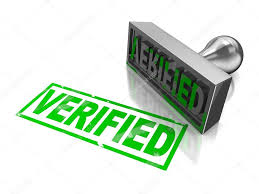A major shakeup of VAT in the construction industry takes place in 2021 – and it’s likely to have significant implications if you’re a subcontractor working in the building sector.
The VAT reverse charge was originally scheduled to start in October 2019, but has now been scheduled to start in March 2021, leaving minimal time to plan for the upcoming changes around how VAT is collected and paid within the construction industry.
How will these VAT changes work?
The VAT domestic reverse charge for building and construction services will apply from 1 March 2021. In a nutshell, if, in the circumstances described below, you’re supplying construction services to a VAT-registered customer then you’ll no longer have to account for the VAT. Instead, the customer will have to account for the VAT – a change that will seem alien to many established subcontractors.
A similar VAT domestic reverse charge process already exists for mobile phone sales and some other niche areas, but the reverse charge will become much more mainstream when it’s introduced for construction services in the UK.
So, how does the reverse charge work?:
- The reverse charge will apply to construction services in the UK, together with related materials, but not to materials supplied separately from any construction services.
- It applies only to transactions that already fall under the Construction Industry Scheme (CIS), and only those where both the contractor and subcontractor are VAT-registered. Effectively, the VAT changes extend the scope of the CIS scheme.
- Accordingly, for services they supply to VAT-registered contractors, subcontractors will require the subcontractor to handle and pay VAT over directly. This applies to both standard and reduced-rate supplies but not to zero-rated supplies.
- The subcontractor will receive payment for the work and materials, less any CIS, but no VAT will be paid over. Contractors will need to make sure that their subcontractors are familiar with the new rules, and ensure that their accounting systems will be able to handle this change to the VAT process.
- Subcontractors need their customers to disclose whether or not they are end users or intermediary suppliers, as the domestic reverse charge will not then apply.
- Effect on VAT Returns: Contractors need to enter the calculated output tax (sales times either the standard or reduced VAT percentage) in box 1 of the VAT Return but must not enter the value of these purchases in box 6. They may reclaim the input tax on their domestic reverse charge purchases in box 4 of the VAT Return and include the value of the purchases in box 7, in the normal way.
- Effect on VAT Returns: Sub-contractors must not enter any output tax (VAT on sales) in box 1 of the VAT Return in respect of sales to which the domestic reverse charge applies, but must enter the value of the net sales in box 6.
The flowchart links below give you a good overview of how VAT will work under the new rules, depending on whether you’re a buyer or a supplier in the chain:
Talk to us about preparing for the VAT reverse charge
As a contractor, you’re likely to experience cashflow pressures once the new rules apply, and that’s bad news for the financial health of your business.
You’ll no longer be able to put the VAT you’ve collected into your business account and use that to aid your cashflow until it’s paid over as part of the normal VAT cycle. At the same time, affected contractors will no longer need to fund the VAT paid to subcontractors and then reclaim this through their VAT returns later.
As you can see, this is a big change, and your bookkeeping and invoicing systems will need to be checked to ensure they can handle the new system. If you need assistance with this, please do contact us and we’ll walk you through the new VAT reverse charge requirements.
Get in touch to prepare for the VAT reverse charge.



